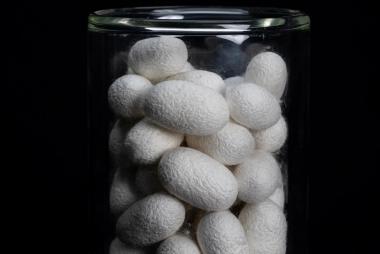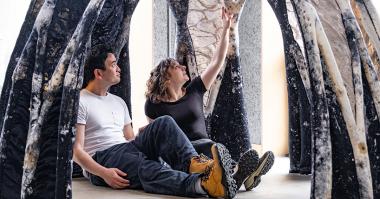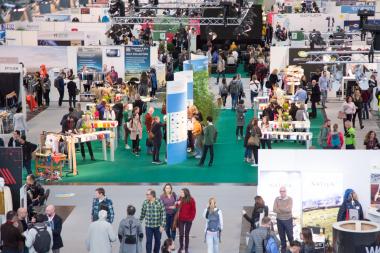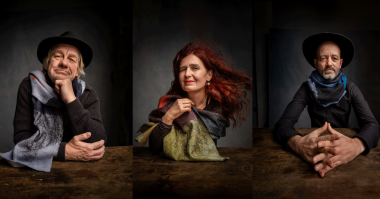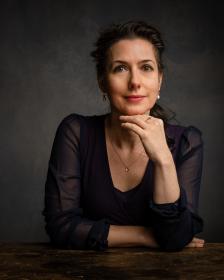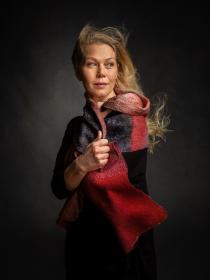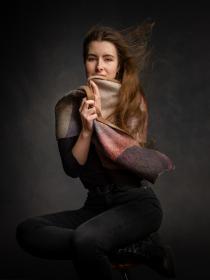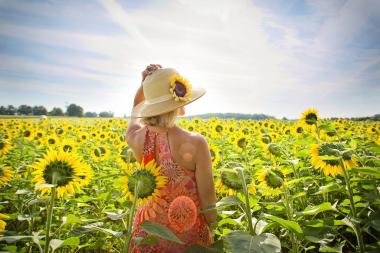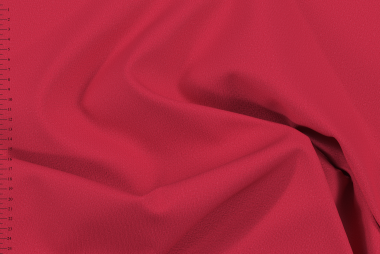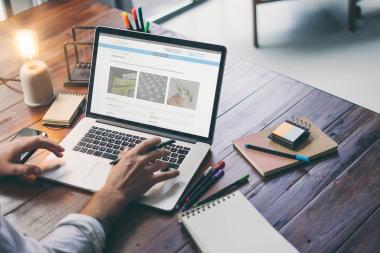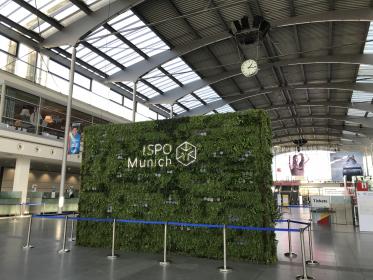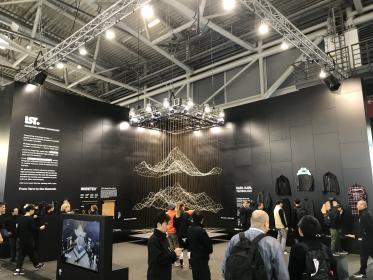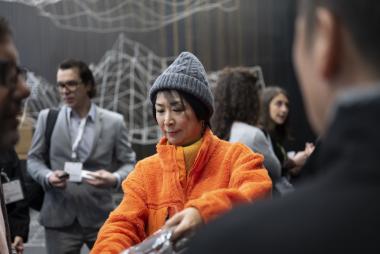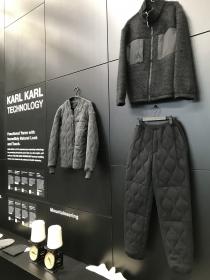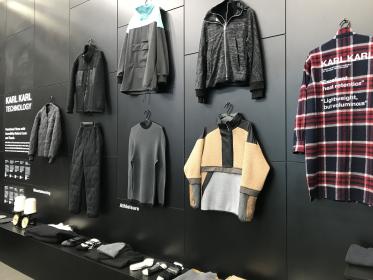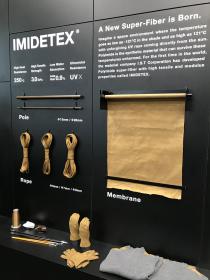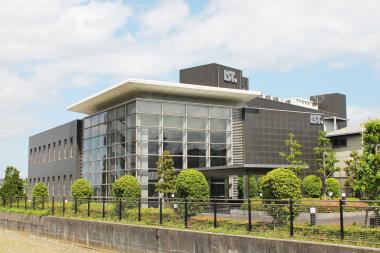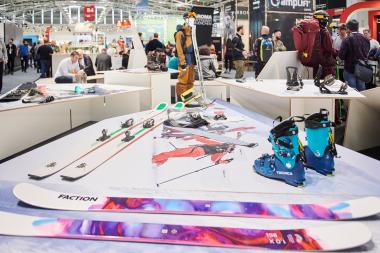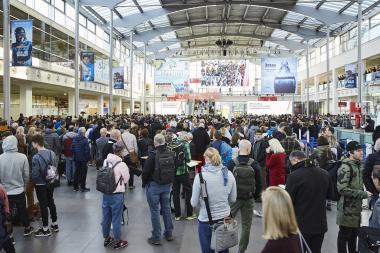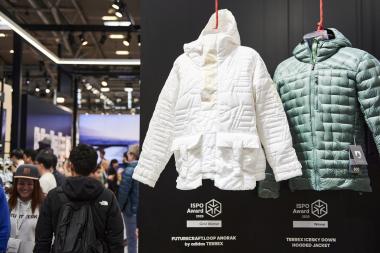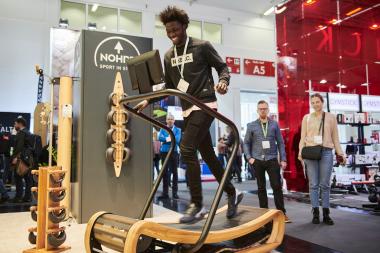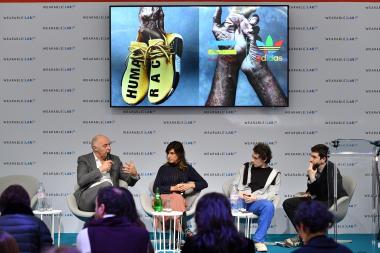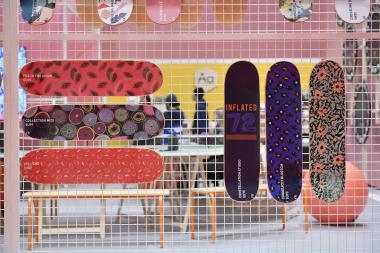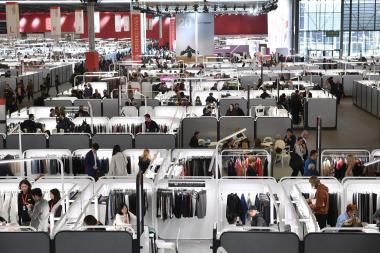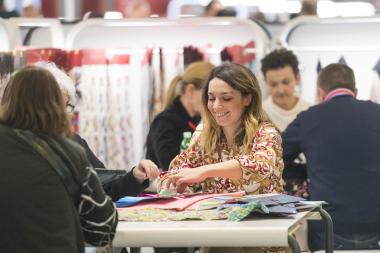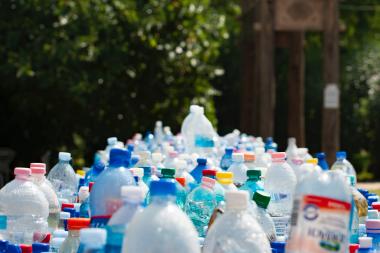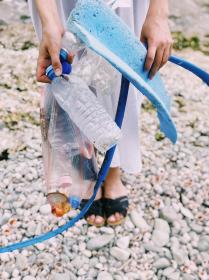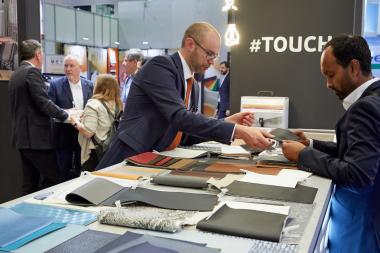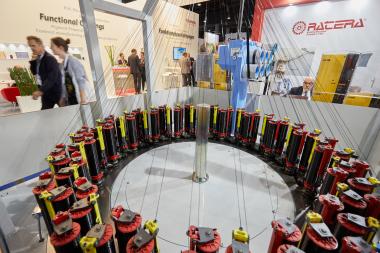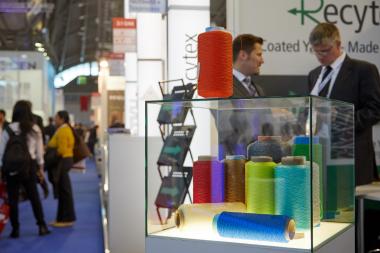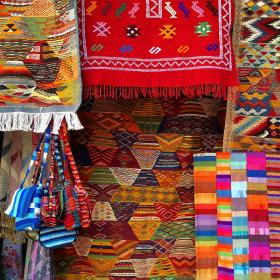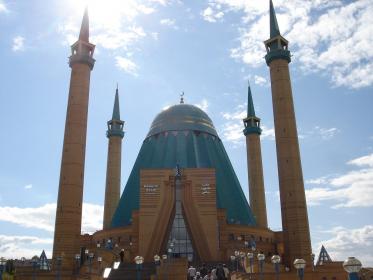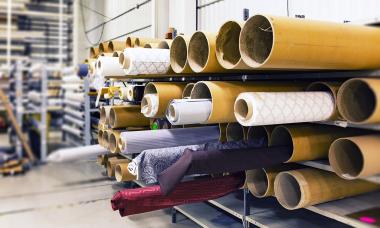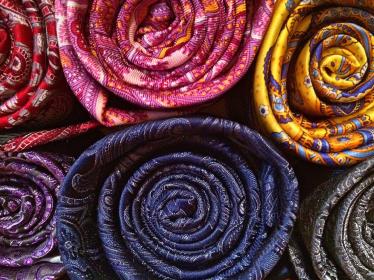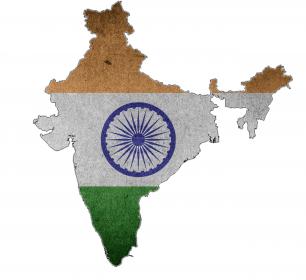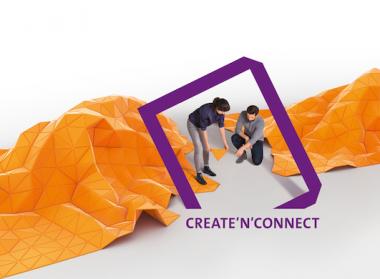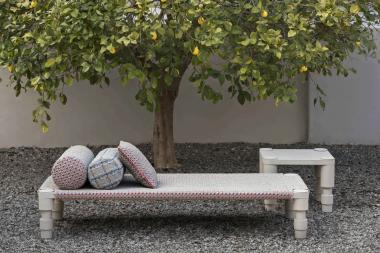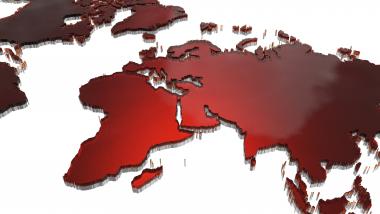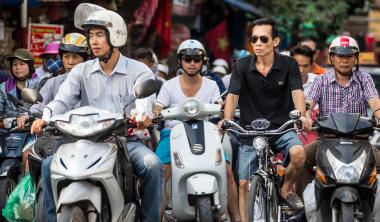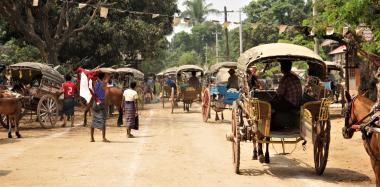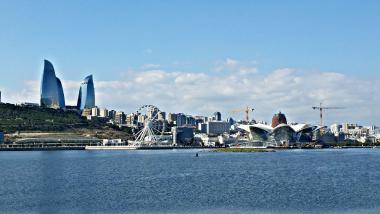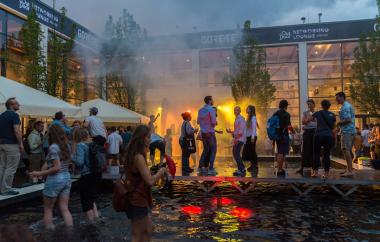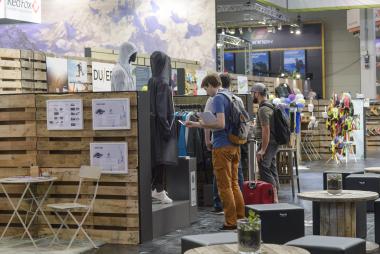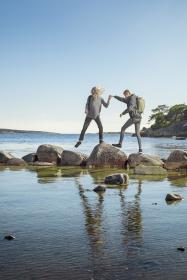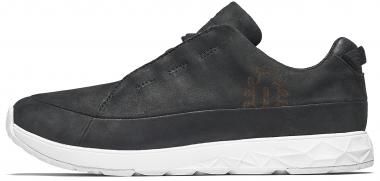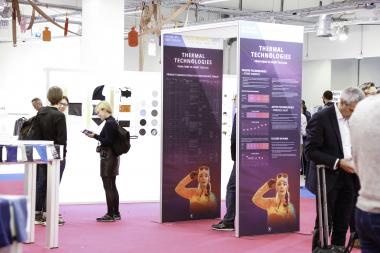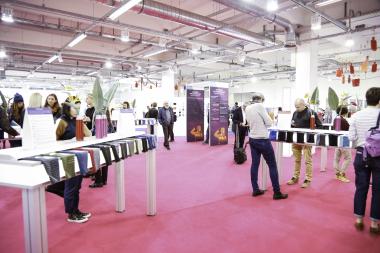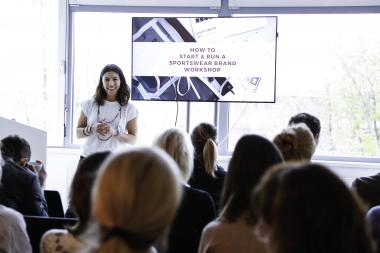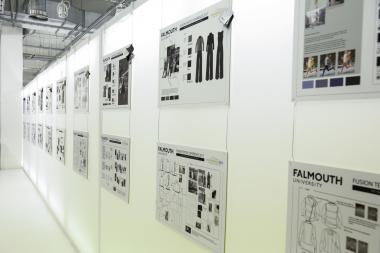Silk Provides the Building Blocks to Transform Modern Medicine
Tufts researchers harness protein from silk to make virus-sensing gloves, surgical screws that dissolve in your body, and other next-generation biomedical materials
About a mile northwest of Tufts’ Medford/Somerville campus, on the fourth floor of a refurbished woolen factory, there is a shrine to silk. Glass vases filled with silkworm cocoons and washed silk fibers sit artfully on a shelf across from a colorful drawing of the life cycle of Bombyx mori, the domesticated silk moth. Farther in, more cocoons in wall-mounted cases border a large, close-up image of silk fibers, and displays hold dozens of prototypes made from silk, including smart fabrics, biosensors, a helmet that changes color upon impact, and potential replacements for materials like leather, plastic, and particle board.
The only things missing are the silkworms themselves, but Fiorenzo Omenetto, the director of Silklab and the Frank C. Doble Professor of Engineering at Tufts, said they will be arriving soon. The lab is building a terrarium so that visitors can view the animals.
“We’re going to have a celebration of silkworms and moths,” Omenetto said.
Silk has been cultivated and harvested for thousands of years. It is best known for the strong, shimmering fabric that can be woven from its fibers, but it also has a long history of use in medicine to dress injuries and suture wounds. At Silklab, Omenetto and his colleagues are building on silk’s legacy, proving that this ancient fiber could help create the next generation of biomedical materials.
Silk moth caterpillars, known as silkworms, extrude a single sticky strand of silk from their mouths to form cocoons, which are harvested by silk farmers to make silk thread. At its core, silk is a mixture of two proteins: fibroin, which provides the fiber’s structure, and sericin, which binds it together. With a few steps in the lab, Tufts researchers can remove the sericin and dissolve the fibers, turning a dry cocoon into a fibroin-filled liquid.
“Nature builds structural proteins that are very tough and very strong,” Omenetto said. “Your bricks are these fibroin proteins floating in water. From there, you can build whatever you want.”
Starting with shipments of dried cocoons from silk farms, Omenetto and his colleagues have been able to create gels, sponges, clear plastic-like sheets, printable inks, solids that look like amber, dippable coatings, and much more.
“Each of the materials that you make can contain all these different functions, and there’s only 24 hours in a day,” Omenetto said with a laugh. “This is why I don’t sleep.”
Biocompatible and Biodegradable
When Omenetto arrived at Tufts almost two decades ago, his research was focused on lasers and optics—silk wasn’t in the picture. But a chance conversation with David Kaplan, the Stern Family Professor of Engineering and chair of the biomedical engineering department, set him on a new path.
Kaplan, who has been working with silk since the early ’90s, was designing a silk scaffold that would help rebuild a person’s cornea, allowing cells to grow between the layers. He needed a way to ensure that the growing cells would have enough oxygen and showed the small, transparent sheet to Omenetto, who was immediately intrigued by the material. Omenetto was able to use his lab’s lasers to put tiny holes in Kaplan’s silk cornea. More collaborations quickly followed.
“We’ve worked together incessantly since then,” Kaplan said.
One of those lines of research has been finding ways to use silk to help repair and regrow bone, blood vessels, nerves, and other tissue. Silk is biocompatible, meaning it doesn’t cause harm in the body and breaks down in predictable ways. With the right preparation, silk materials can provide necessary strength and structure while the body is healing.
“You can mold and shape silk to whatever you need, and it will hold that volume while the native tissue regrows into the space and the silk material degrades,” Kaplan said. “Eventually it’s 100 percent gone, and you’re back to your normal tissue.”
Some of this work has already been approved for use by the U.S. Food and Drug Administration. A company called Sofregen, which spun out of Kaplan and Omenetto’s research, is using an injectable silk-based gel to repair damaged vocal cords, the tissues that regulate air flow and help us speak.
On their own, sturdy silk structures can keep their size, shape, and function for years before degrading. But in some instances, such as those involving surgical screws and plates intended for use in rapidly growing children, this pace would be too slow. The researchers had to find a way to speed up the time it takes for dense silk biomaterials to break down. They introduced an enzyme that our bodies produce naturally into the silk to hasten the breakdown process. The idea is that the enzyme would sit dry and inactive within the silk device until the structure is installed in a person, then the device would hydrate and activate the enzyme to digest the material more rapidly.
“We can titer in just the right amount of enzyme to make a screw go away in a week, a month, a year,” Kaplan said. “We have control over the process.”
Currently, Kaplan and his lab are working on other small, degradable medical devices that would help cut down on the number of surgeries that patients need. Ear tubes, for example, are often surgically implanted to help alleviate chronic ear infections and then need to be surgically removed. Kaplan and his colleagues have designed silk-based ear tubes that degrade on their own and can even carry antibiotics.
“As someone with a daughter who went through six surgeries on her ear, I know how helpful this could be,” Kaplan said.
Laura Castañón, Tufts University, Massachusetts USA


